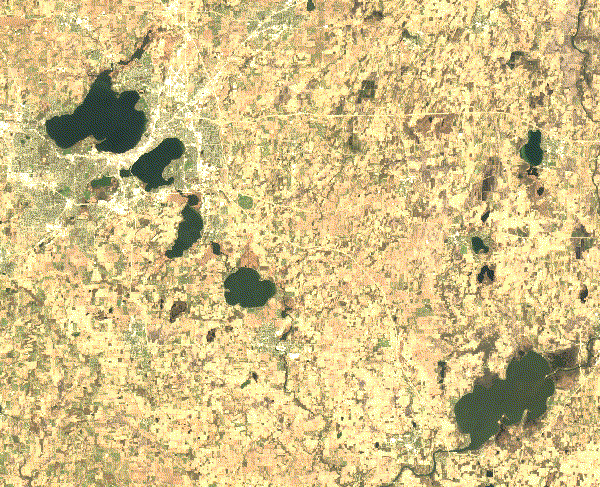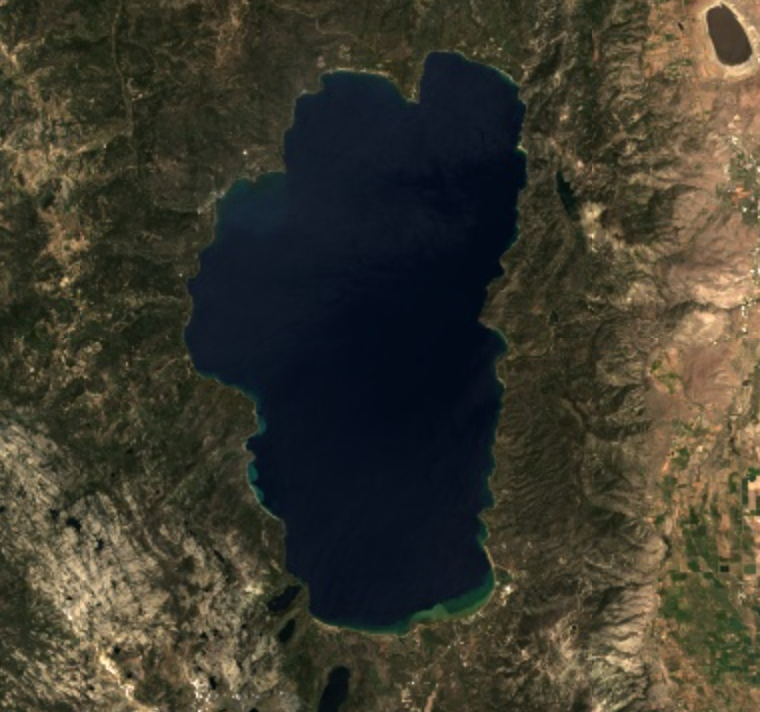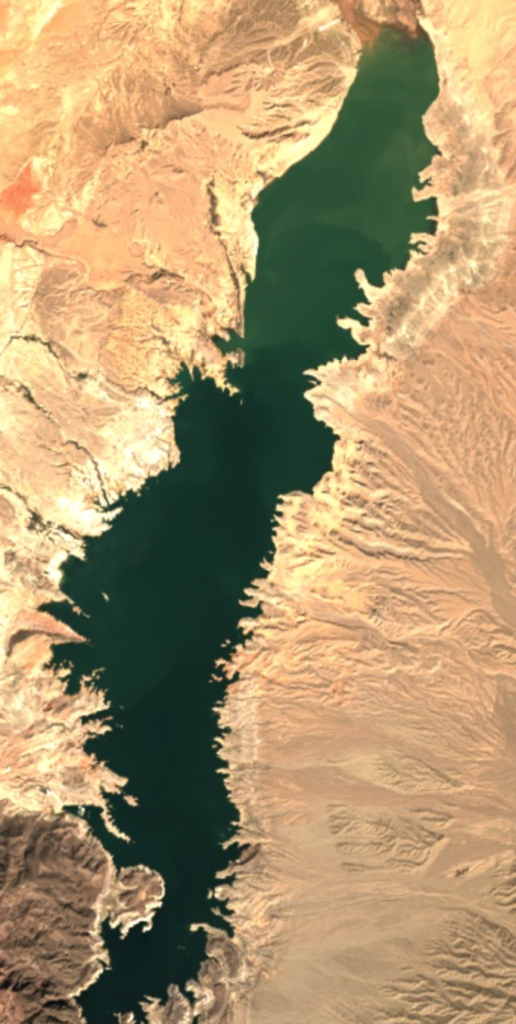New dataset allows for first regional view of lake color changes over decades
3 June 2021

Wisconsin’s Lake Mendota is one of the tens of thousands of lakes included in a new study that mined decades of Landsat scenes to observe regional lake color changes through the seasons. This series of scenes shows typical lake color changes through the seasons.
Credit: Simon Topp
AGU press contact:
Liza Lester, +1 (202) 777-7494, [email protected] (UTC-4 hours)
Contact information for the researchers:
Simon Topp, University of North Carolina, Chapel Hill, [email protected] (UTC-4 hours)
WASHINGTON— Lakes throughout the U.S. are experiencing changes in their seasonal colors, with distinct regional patterns, according to a new study of more than 26,000 lakes over 36 years that includes more than 22 million lake observations by satellites.
The study finds that from 1984 to 2020, lakes in the Pacific Northwest generally became bluer, with little seasonal transition in color, while lakes in the Northeast are showing changes in the seasonal timing of their transition from blue to green and back again. High-elevation lakes in locations where the air temperature varies a lot year-to-year and lakes with more people living nearby are the most likely to see changing and inconsistent color cycles over time.
Lake color changes are caused, in part, by the abundance or lack of green algae in lakes. Changes in lake temperature and influxes of nutrients that affect algae growth are governed by freeze and thaw dates, surrounding land use, and surface runoff which, in turn, are intimately tied to a changing climate.

Because of its high elevation, small drainage basin and lack of nutrients, Lake Tahoe has little algae and is a very blue lake.
Credit: Landsat image, U.S. Geological Survey
The new research, in the AGU journal Water Resources Research, which publishes original research on the movement and management of Earth’s water, is the first view of shifting patterns of lake color at a regional scale.
“Limnology has been dominated by researchers studying one or two lakes,” said limnologist Emily Stanley of the University of Wisconsin in Madison, who was not involved in the study. Sometimes researchers will team up and study tens of lakes at a time, she said, but “This work gives us this objective, big-picture view of really what’s going on in lakes. It’s new and it’s incredibly powerful.”
Lake pixels
The new findings are the first application of a new dataset the researchers created, which analyzes more than 328,000 Landsat satellite scenes containing lakes from 1984 to 2020 for their lake color pixels. The database, called LimnoSat-US, allowed the researchers to identify the specific colors of lakes on a vast scale and through the seasons, year after year.

Reservoirs like Lake Mead are feed by rivers and can have large drainage areas with high nutrient levels. Such lakes can be greener, seasonally, as algae growth cycles through the year.
Credit: Landsat image, U.S. Geological Survey
Freshwater biologists have long known that lakes change color over the year, similarly to how deciduous forests’ colors change through the seasons. For lakes, the colors range from dark blue to green-yellow, with the bluer lakes having less algae than greener lakes. Warmer temperatures, sunshine and a fresh influx of nutrients lead lakes to typically hit one or more algae-rich green periods of varying lengths in the spring and summer months.
The new study was based on this lake color knowledge, which was gained from decades of research on individual lakes.
“We found that these patterns of color seen in LimnoSat-US data matched really well to the seasonal patterns other researchers have observed in highly studied water bodies,” said Simon N. Topp, a researcher at the University of North Carolina at Chapel Hill and lead author of the study. “One of the coolest things is how we can use that knowledge of local systems and extrapolate to a much larger scale with the satellite data.”
By looking at such a large number of lakes, the researchers were able to identify four main categories of lake color cycles: spring greening, summer greening, bimodal and non-seasonal. Spring greening lakes shift from blue to green in spring. Summer greening lakes shift greener from spring through summer. Bimodal lakes shift greener in the spring, then get a little bluer in summer, and then shift to green again in autumn. Non-seasonal lakes are either distinctly green or blue, with little transitional color. Furthermore, researchers found that the stability of a lakes seasonal cycle was tied to the stability of its surrounding environment. Lakes in areas with large year-to-year variations in climate and catchment population density were more likely to move from one seasonal pattern to another.
The vastly larger sample size available from using the LimnoSat-US remote sensing database makes it possible to see larger-scale patterns in lake biology. To use the comparison to trees again, it allows scientists to see not just the individual trees or a grove, but the whole forest and its changing patterns in relation to other larger trends and processes, like climate change, drought or regional human activities.
###
AGU (www.agu.org) supports 130,000 enthusiasts to experts worldwide in Earth and space sciences. Through broad and inclusive partnerships, we advance discovery and solution science that accelerate knowledge and create solutions that are ethical, unbiased and respectful of communities and their values. Our programs include serving as a scholarly publisher, convening virtual and in-person events and providing career support. We live our values in everything we do, such as our net zero energy renovated building in Washington, D.C. and our Ethics and Equity Center, which fosters a diverse and inclusive geoscience community to ensure responsible conduct.
Notes for Journalists:
This research study is open access. Download a PDF copy of the paper here. Neither the paper nor this press release is under embargo.
Paper title:
“Shifting Patterns of Summer Lake Color Phenology in Over 26,000 US Lakes”
Authors:
- Simon N. Topp (corresponding author), Department of Geological Sciences, University of North Carolina at Chapel Hill, Chapel Hill, NC, USA
- Tamlin M. Pavelsky, Department of Geological Sciences, University of North Carolina at Chapel Hill, Chapel Hill, NC, USA
- Hilary A. Dugan, Center for Limnology, University of Wisconsin-Madison, Madison, WI, USA
- Xiao Yang, Department of Geological Sciences, University of North Carolina at Chapel Hill, Chapel Hill, NC, USA
- John Gardner, Department of Geological Sciences, University of North Carolina at Chapel Hill, Chapel Hill, NC, USA, Department of Geology and Environmental Science, University of Pittsburgh, Pittsburgh, PA, USA
- Matthew R.V. Ross, Department of Ecosystem Science and Sustainability, Colorado State University, Fort Collins, CO, USA